Luminox is well-known in the professional community for its tough-as-nails watches utilizing tritium illumination, and many of their products have been given the seal of approval by various military and governmental organizations. For nearly 30 years, the company has been crafting timepieces that are virtually indestructible and stand up to abuse in the harshest of environments.
It should come as no surprise then that ICE-SAR, the Icelandic Association for Search & Rescue, would be a natural customer for a custom Luminox watch. ICE-SAR is a 90-year-old volunteer organization with over 4,000 active members that provides search-and-rescue and accident prevention services in Iceland, where the weather is utterly unpredictable and mere seconds can mean the difference between life and death for someone who requires rescue or evacuation.
With these unique requirements in mind, Luminox designed a special timepiece meant specifically for use in the Icelandic environment, the ICE-SAR ARCTIC series. Featuring a 46mm Carbonox case with 316L stainless steel case back and double O-ring crown, the watch is water-resistant to 200m, and each is individually tested. The dial, which is available in blue, black or white variants, features Tritium tubes for 25 years of constant illumination as well as Tritium tube-outfitted minute and hour hands, a fixed bezel with individual minute markings, and a sapphire crystal with AR coating. With its Ronda 515 high-frequency quartz movement, this is a watch that can take a beating without losing any time, which is essential for a rescue team whose mantra is “Every second counts.”
We traveled to Iceland with Luminox to better understand the capabilities of ICE-SAR and how they utilize Luminox watches in their everyday training and operations, and we have to say, it was pretty damn impressive:
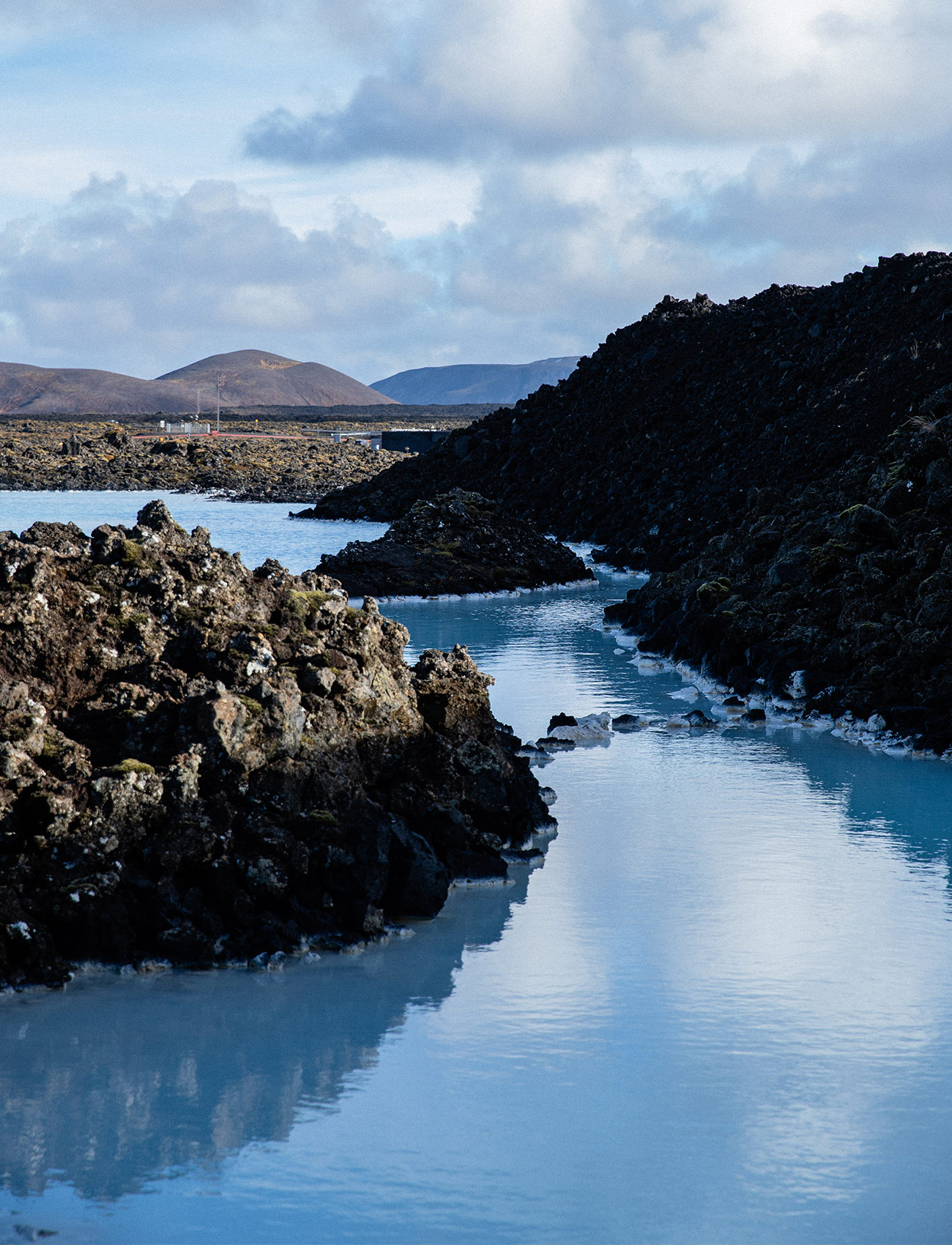
Iceland is frequently referred to the Land of Fire and Ice, and not without good reason. The sheer amount of geothermal activity has made for a staggeringly beautiful landscape, but also one that presents untold dangers for the local inhabitants.
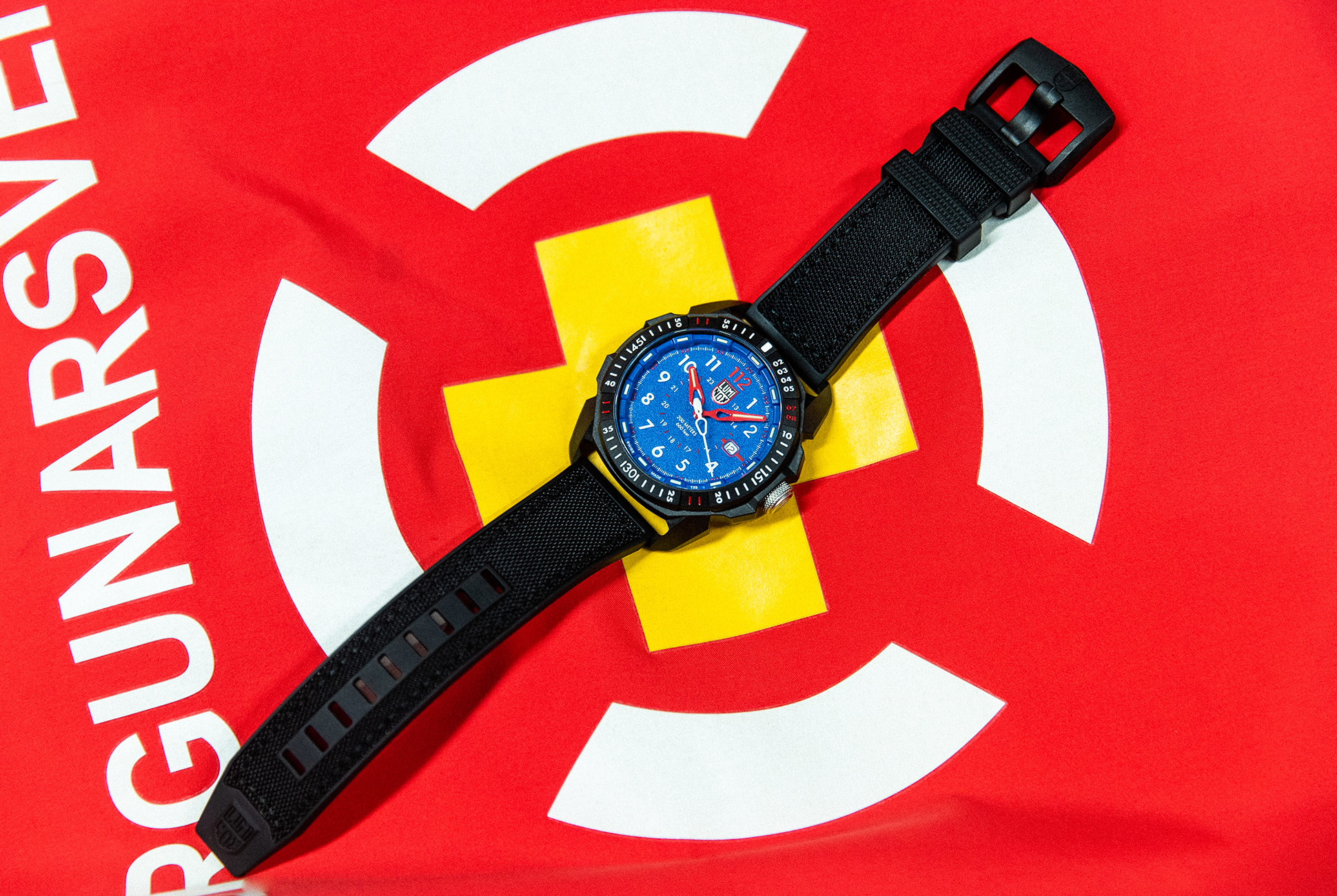
ICE-SAR needed a watch that was water-resistant, easily legible in low-light conditions, and physically light, which is part of the reason a Carbonox-cased Luminox watch was a natural choice. Carbonox is a special carbon compound that offers a rigid finish and high durability without adding weight.
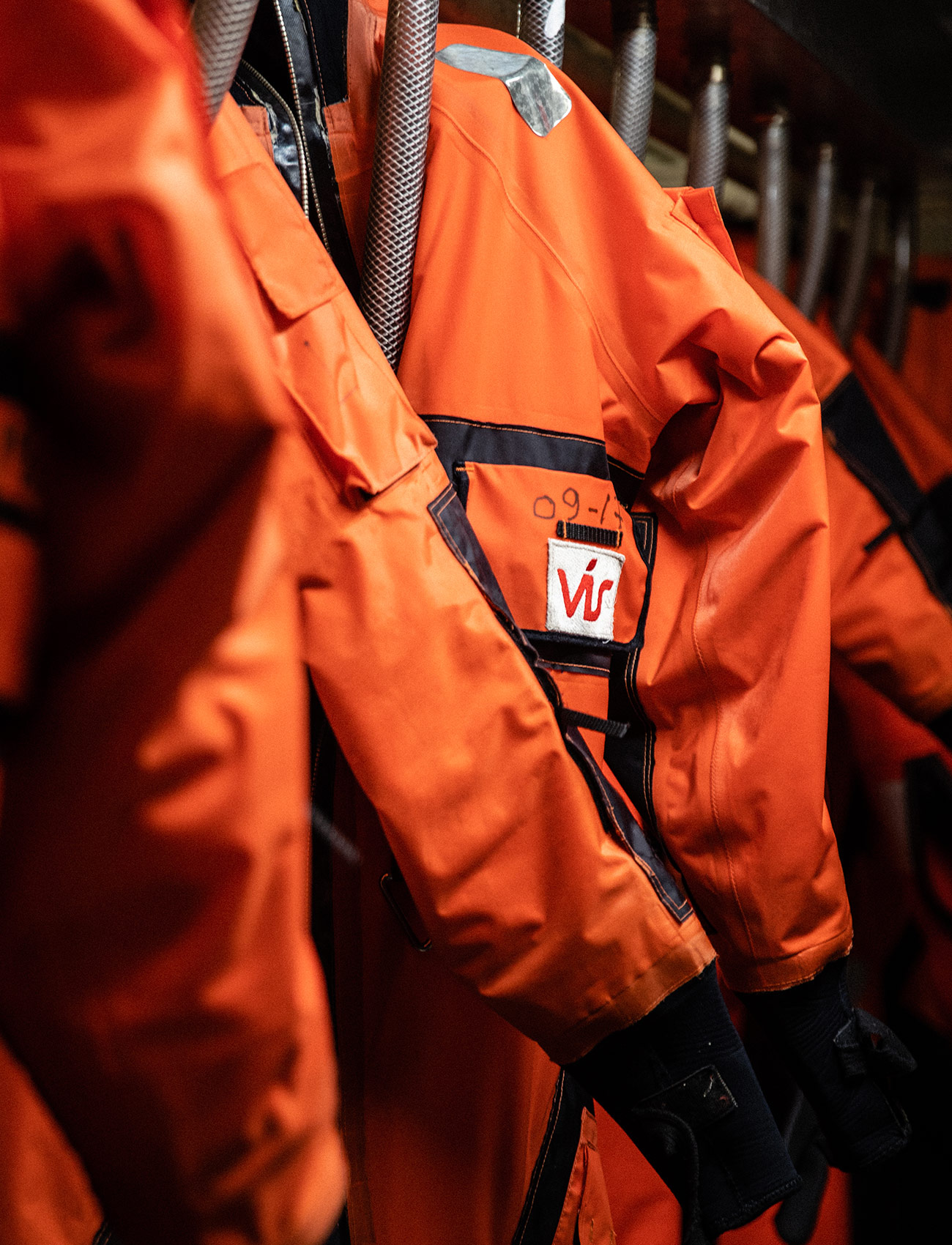
If you were to fall into the frigid North Atlantic waters that surround Iceland in winter, you wouldn’t survive long, so for rescue operations, the ICE-SAR utilizes a special waterproof suit that allows the operators to stay dry and warm, and in which the average body temperature will only drop two degrees Celsius.
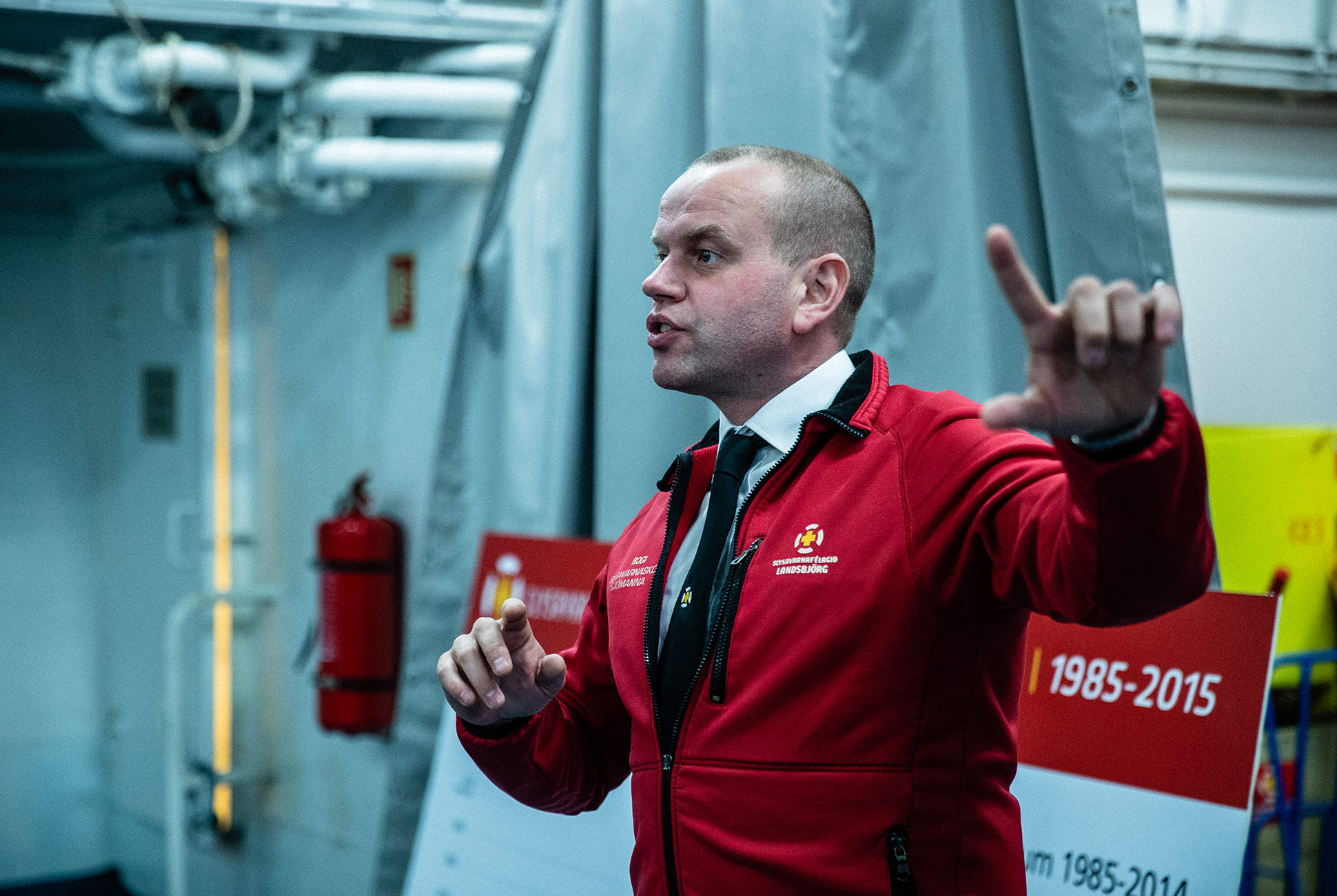
ICE-SAR’s training facility is actually located on a ship that served as a ferry in the Canary Islands in the 1970s. Here, the teams (ICE-SAR is composed of separate groups of volunteers from all around the country) can train in fire prevention, administration of first aid, disaster response and more.
“When you look at Luminox, we have been involved with special operations, with various search-and-rescue teams and other first responders for almost 30 years, and time is, of course, something that is always crucial on those missions.”- Martin Grossenbacher, Sales Manager, Luminox
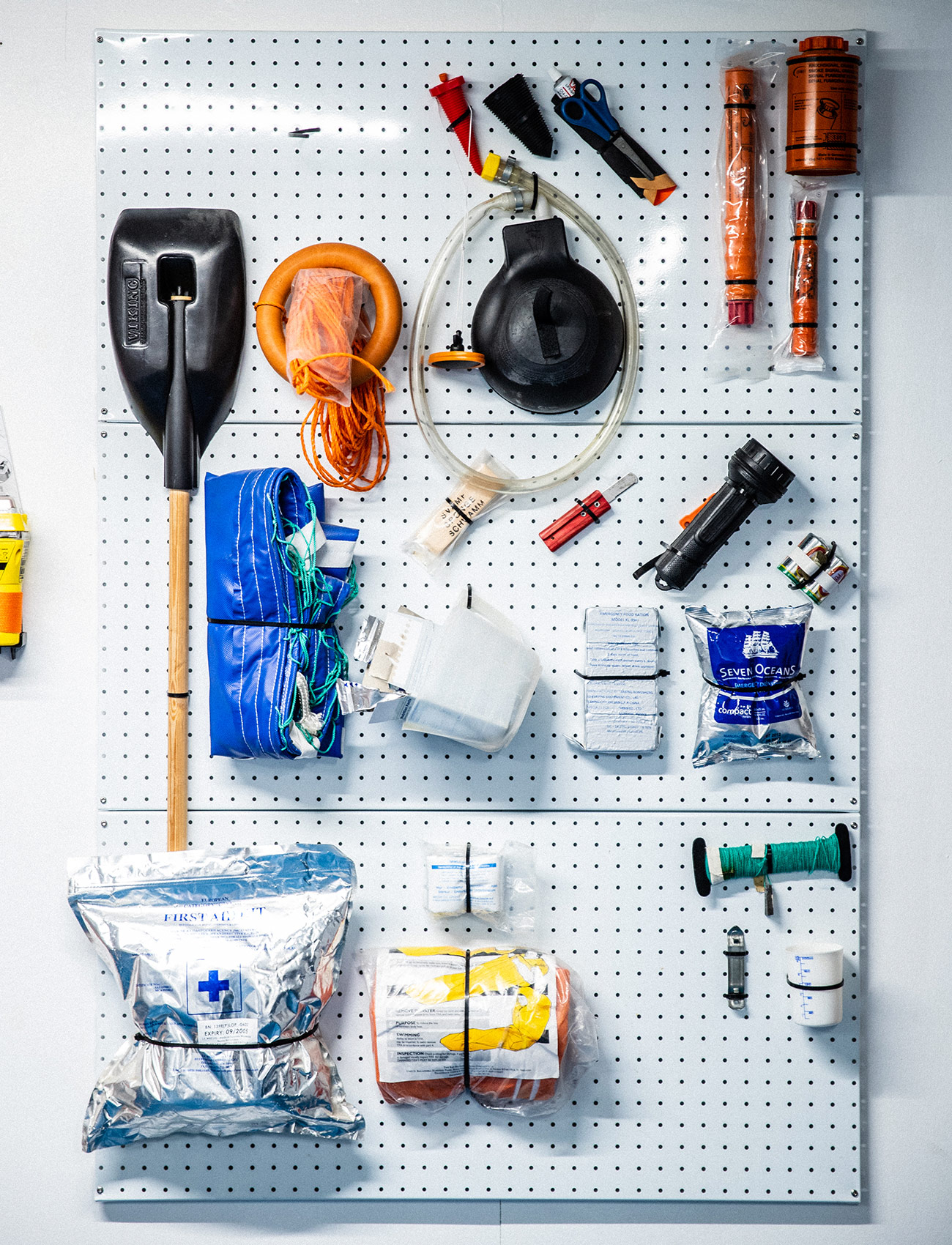
Search-and-rescue work naturally requires specialized gear, and lots of it. Thankfully today, less survival equipment is generally prescribed on individual vessels, as most rescues in Icelandic waters happen within a matter of hours. A fishing line, once essential, is now less necessary a piece of kit.
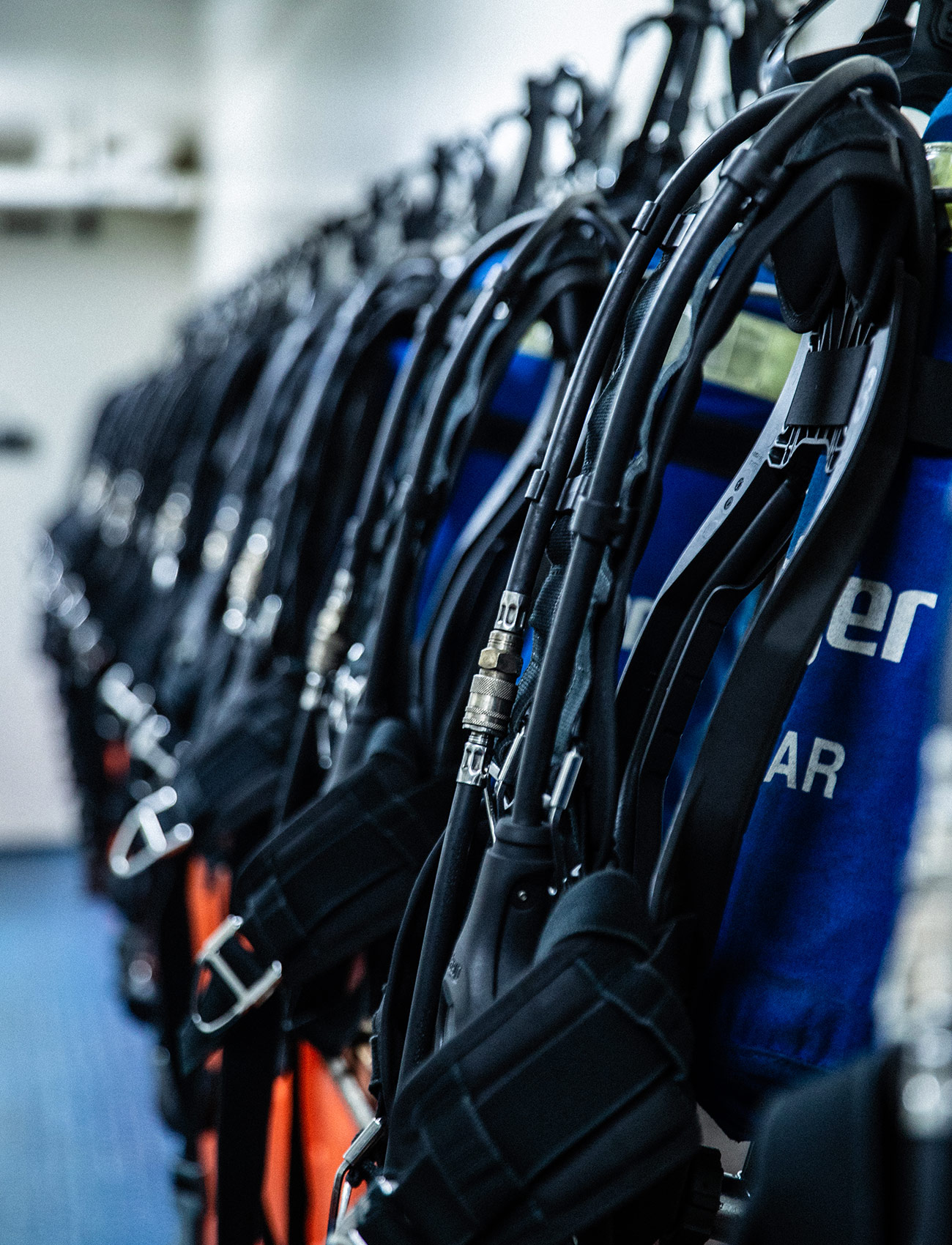
Firefighting is as necessary a task at sea as it is at land, and just as dangerous. ICE-SAR personnel train constantly to fight fires onboard the training vessel, for which special breathing apparatus is necessary.
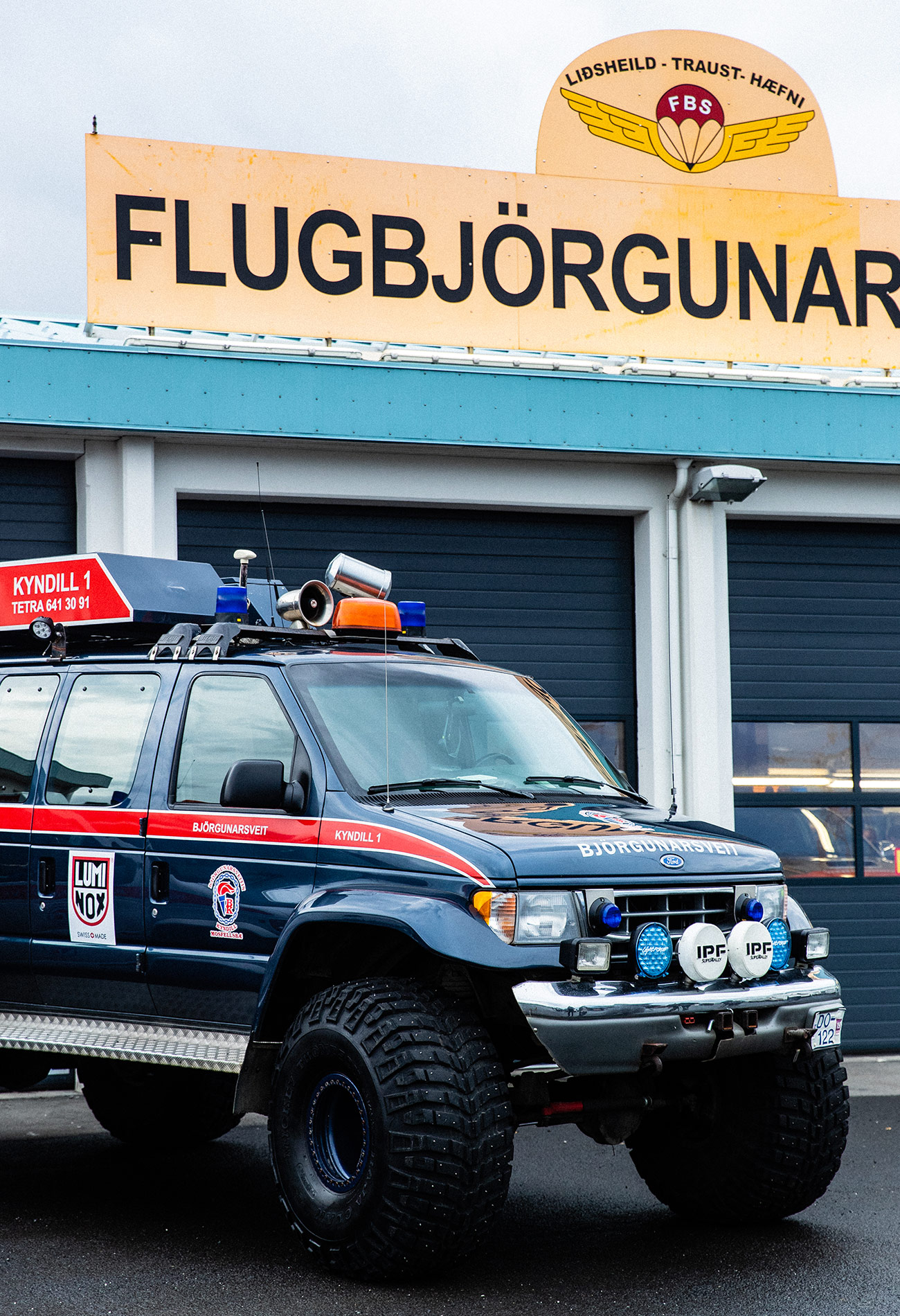
ICE-SAR includes numerous units, some of which have specialized capabilities. The Flugbjörgunarsveitin, for instance, in an airborne rescue unit whose specialty is insertion via parachute. By parachuting in personnel or supplies, ICE-SAR can reach terrain that would otherwise be difficult or impossible to access, and the unit can be airborne within 45 minutes of receiving a call.
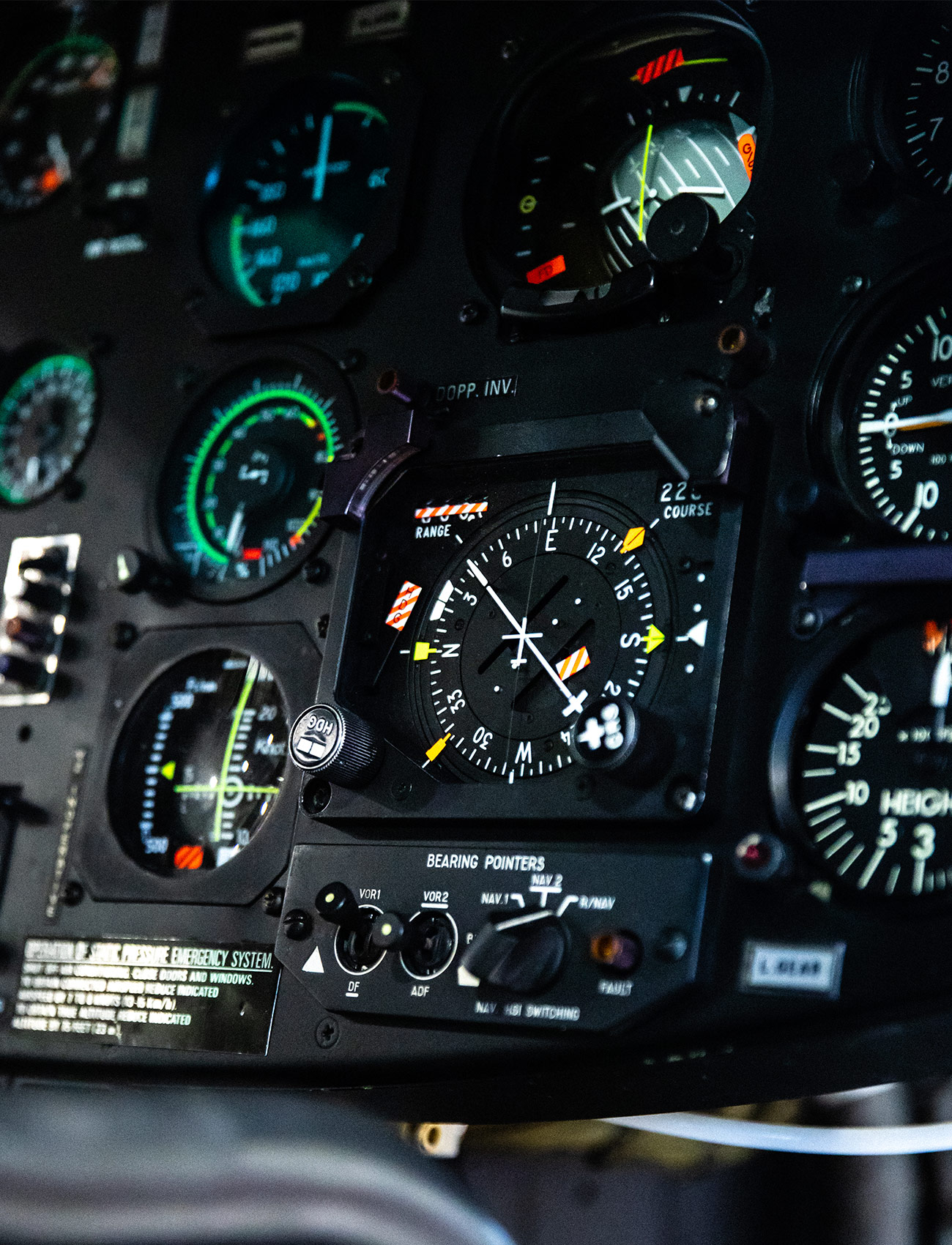
ICAll kinds of vehicles are utilized to reach people in need of rescuing, including specialized trucks, boats and of course, helicopters. The cockpit seen here is of a Super Frelon on loan to ICE-SAR from Norway.
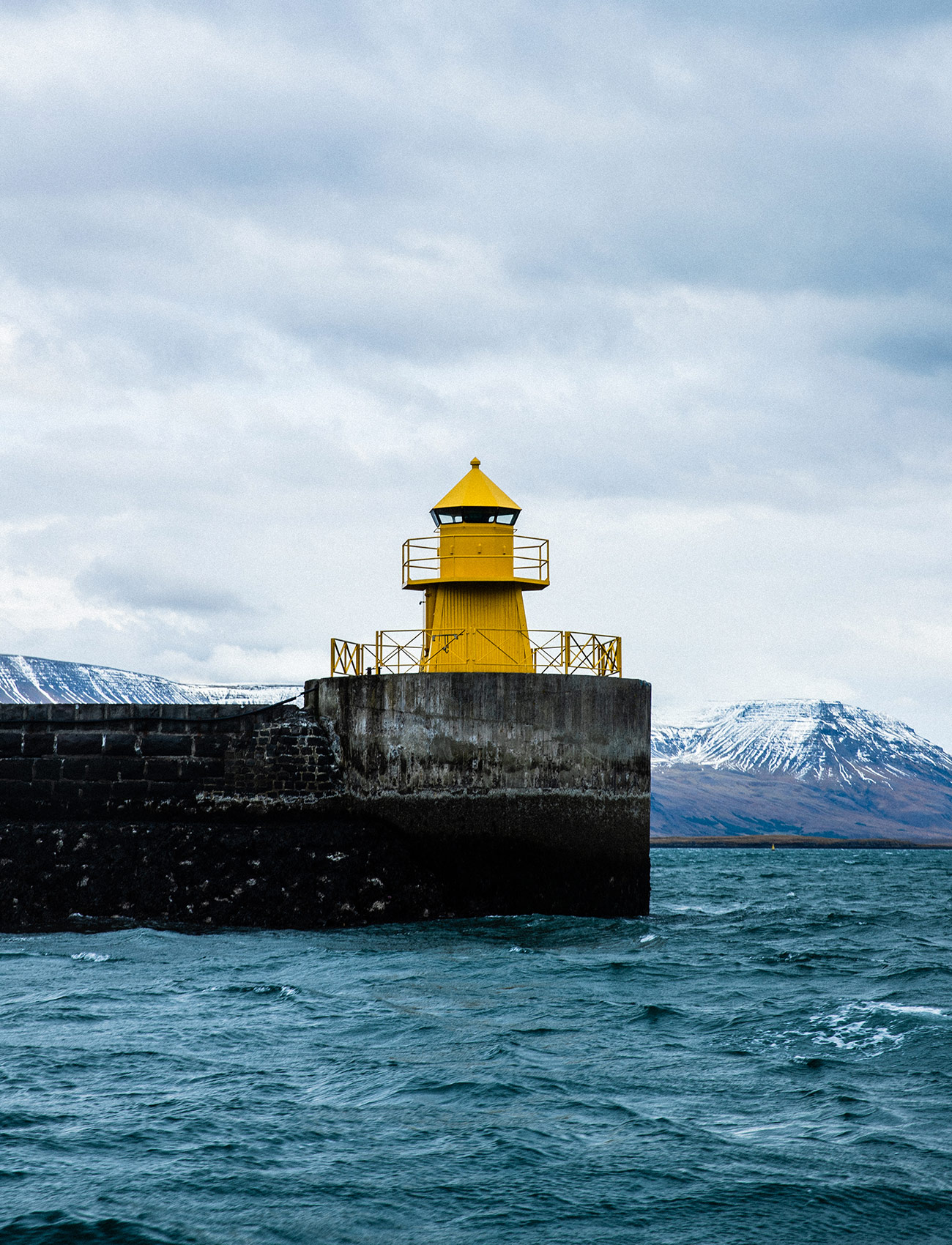
Being an island in the North Atlantic, Iceland has naturally produced a seafaring people. They take to the waters not only by choice, but out of necessity, and despite the beauty of the sea, it’s a treacherous environment that has wrecked many a vessel and caused much loss of life throughout the centuries.
“”In the beginning of the 20th century, around 70 or 80 seafarers were killed around Iceland, which is a large amount for such a small nation. Since we started the Survival and Training Center back in 1985, the progress has been huge, and we’ve already had four years in which there have been no casualties at sea around Iceland, and that’s truly amazing.” – John, ICE-SAR
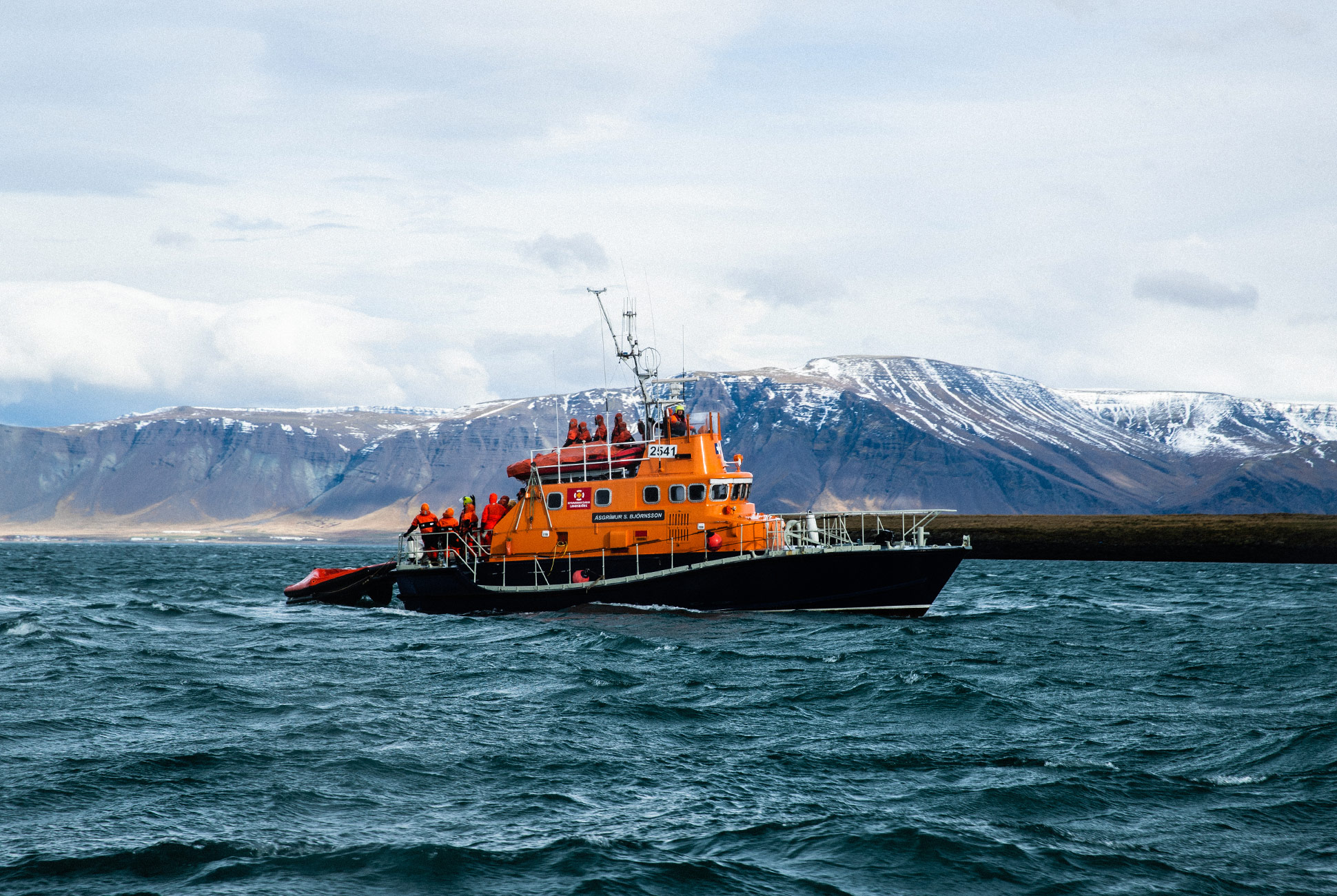
If you want to volunteer for ICE-SAR, you had better not be prone to seasickness. These brave men and women train constantly on and in the frigid waters surrounding their homeland to rescue those in need. ICE-SAR is not only a volunteer organization, but it is also funded through donations rather than by the government.
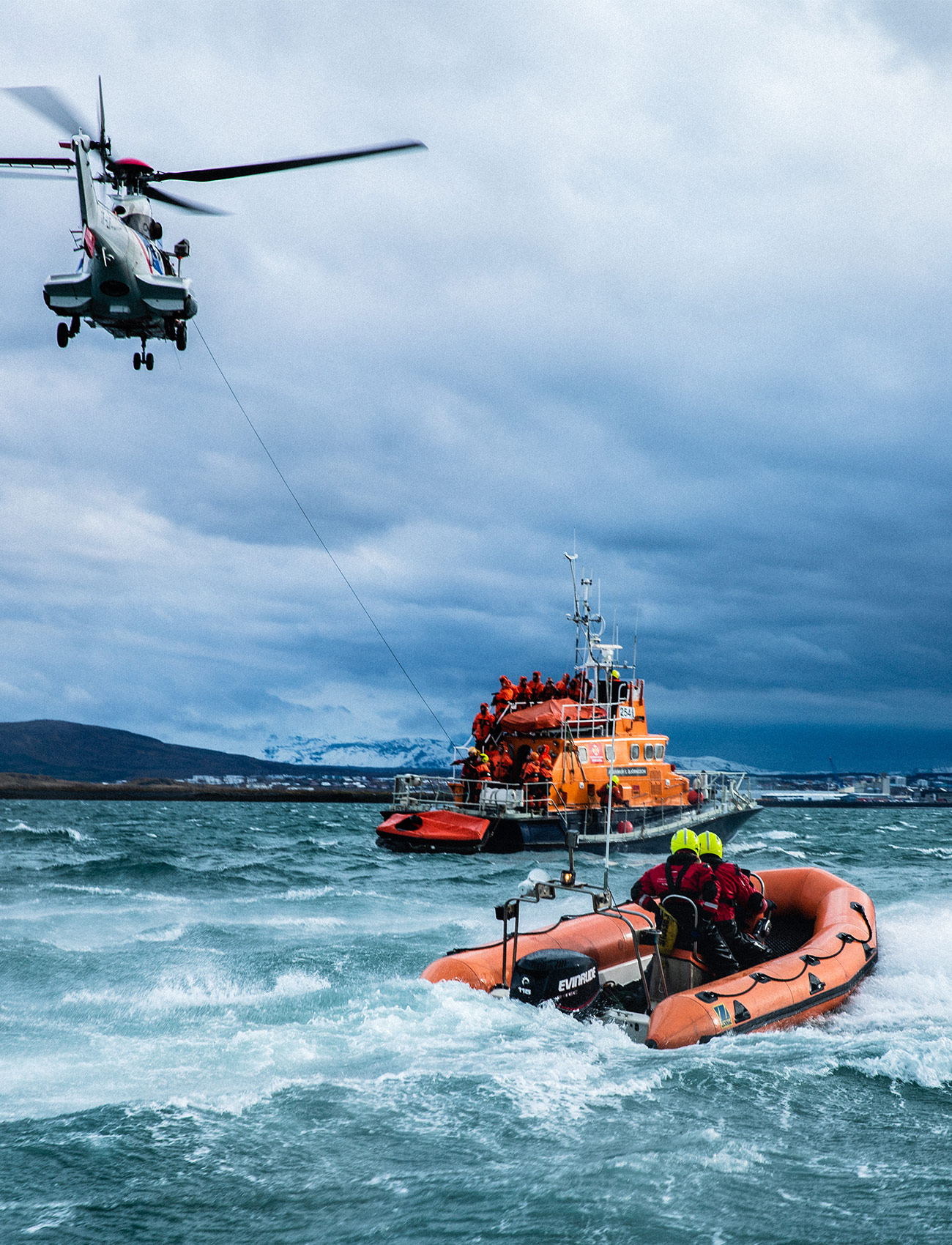
ICE-SAR personnel take turns getting extracted via winch and cable by this Super Puma helicopter. The volunteers must be proficient at helicopter extraction from vessels, from life rafts getting tossed about on the sea, and from the water itself, in which they train wearing specialized waterproof suits.
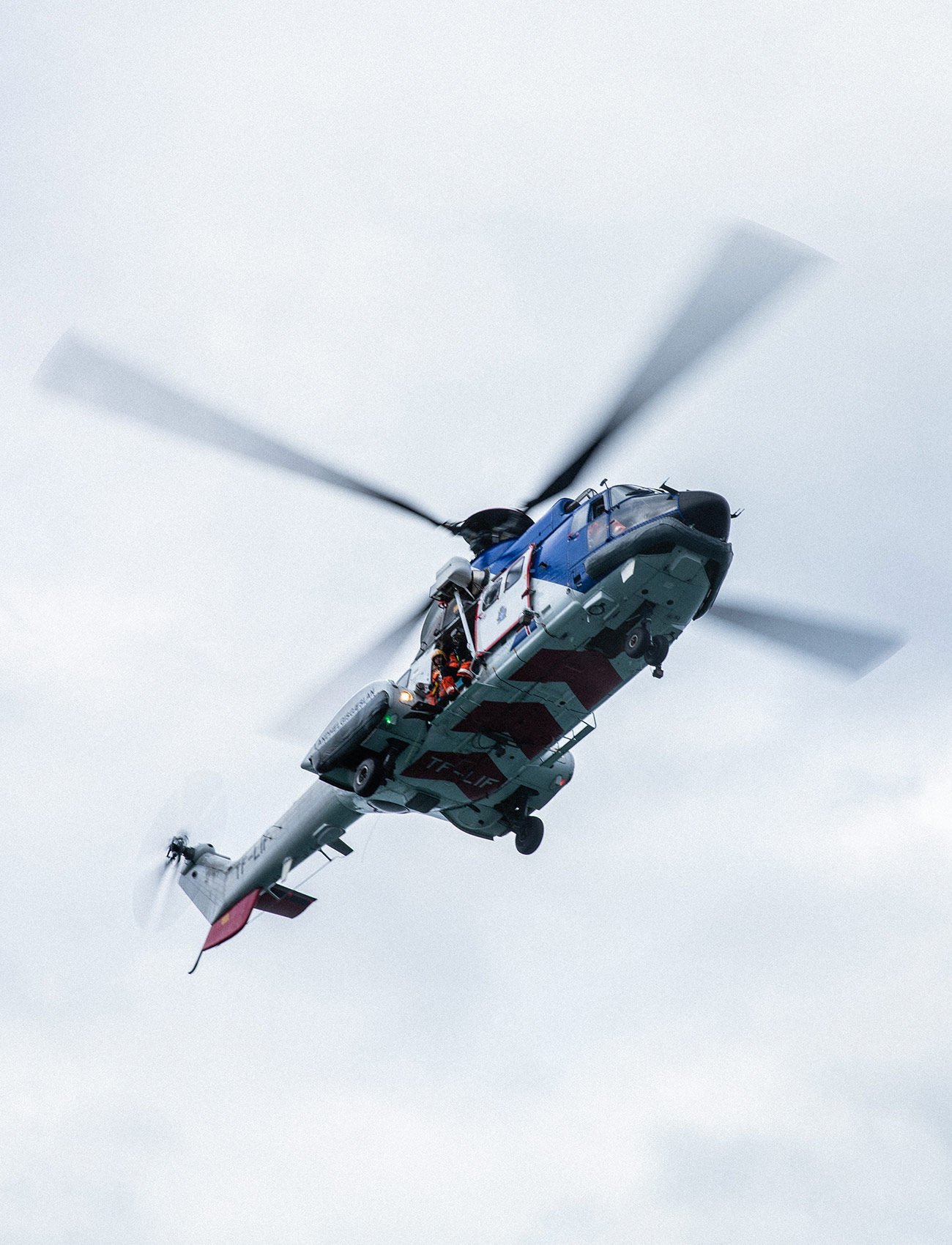
A special cable-and-winch system allows this Super Puma helicopter to lower a rescue diver or a stretcher to someone in need of extraction. Equipment such as this and the brave volunteers from ICE-SAR are often the only things that stand between life and death for someone in need in Iceland.
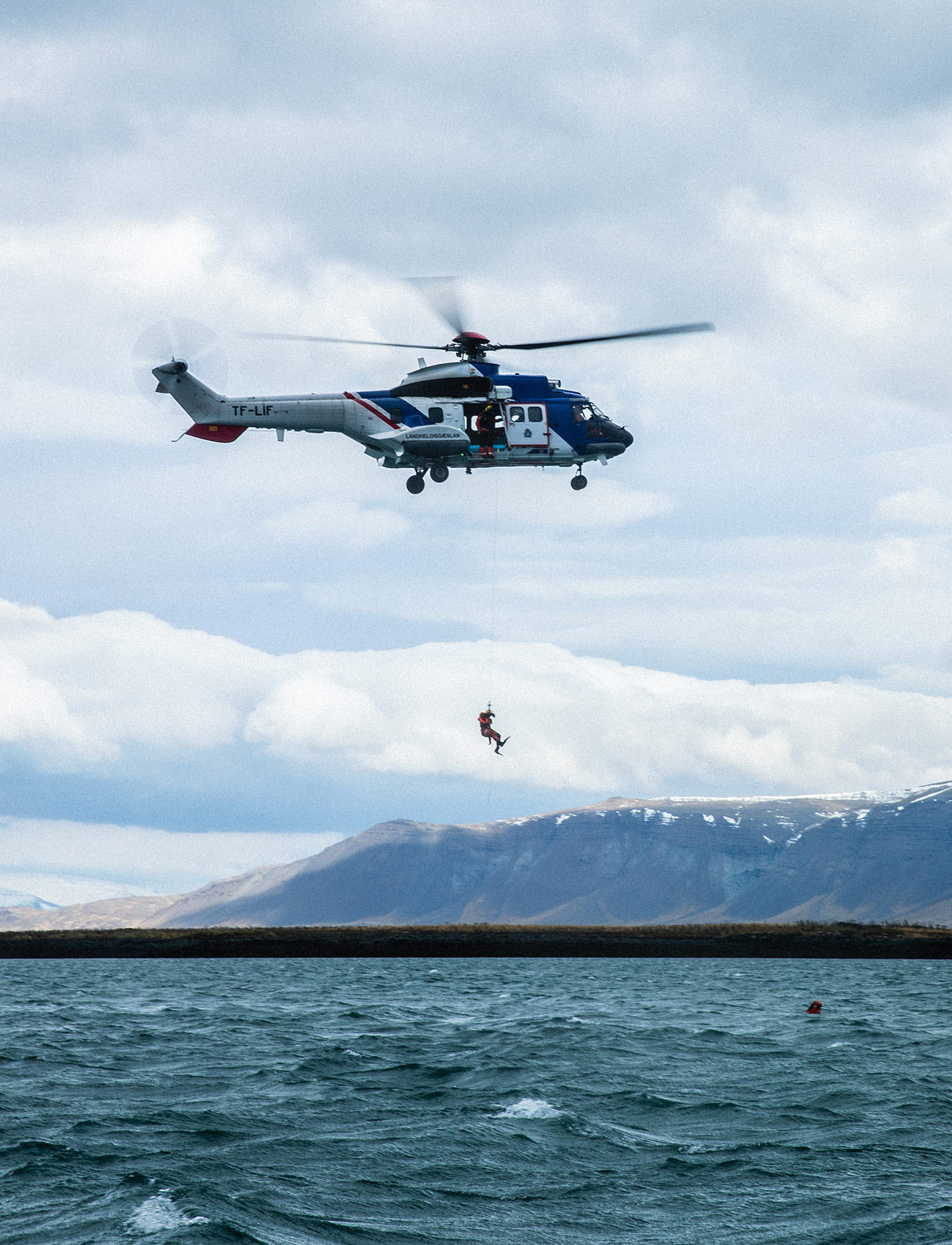
It’s one thing to be a strong swimmer, another to be a strong swimmer in freezing water, and yet another to be a strong swimmer in freezing water who drops via cable from a hovering 10,000-lb. helicopter in order to rescue some in duress.
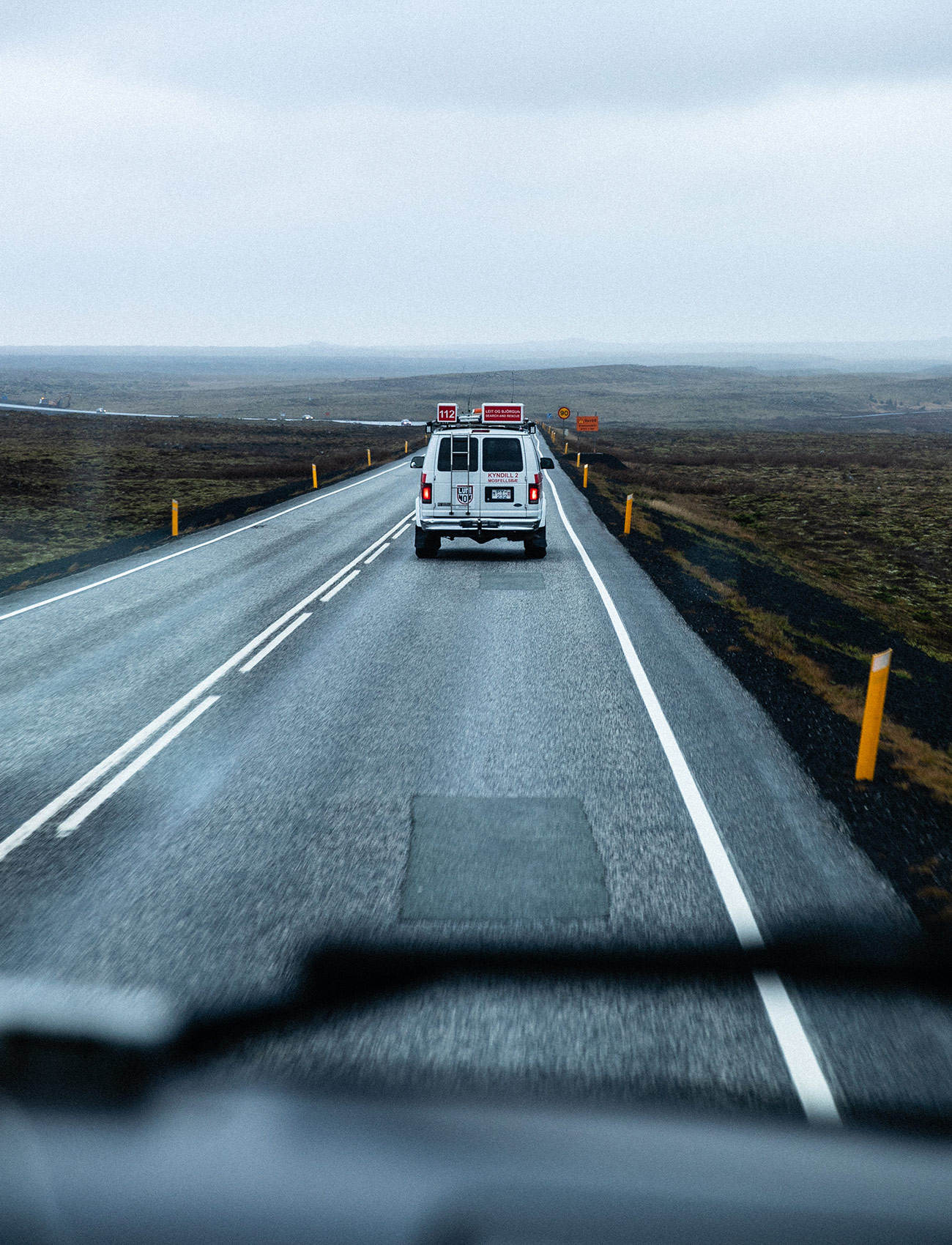
Accessing towns and settlements that ring Iceland’s exterior is fairly straightforward in decent weather. When the weather turns, however, or you have to access someone stranded in the interior of the country (say, on a glacier), serious off-road vehicles are needed.
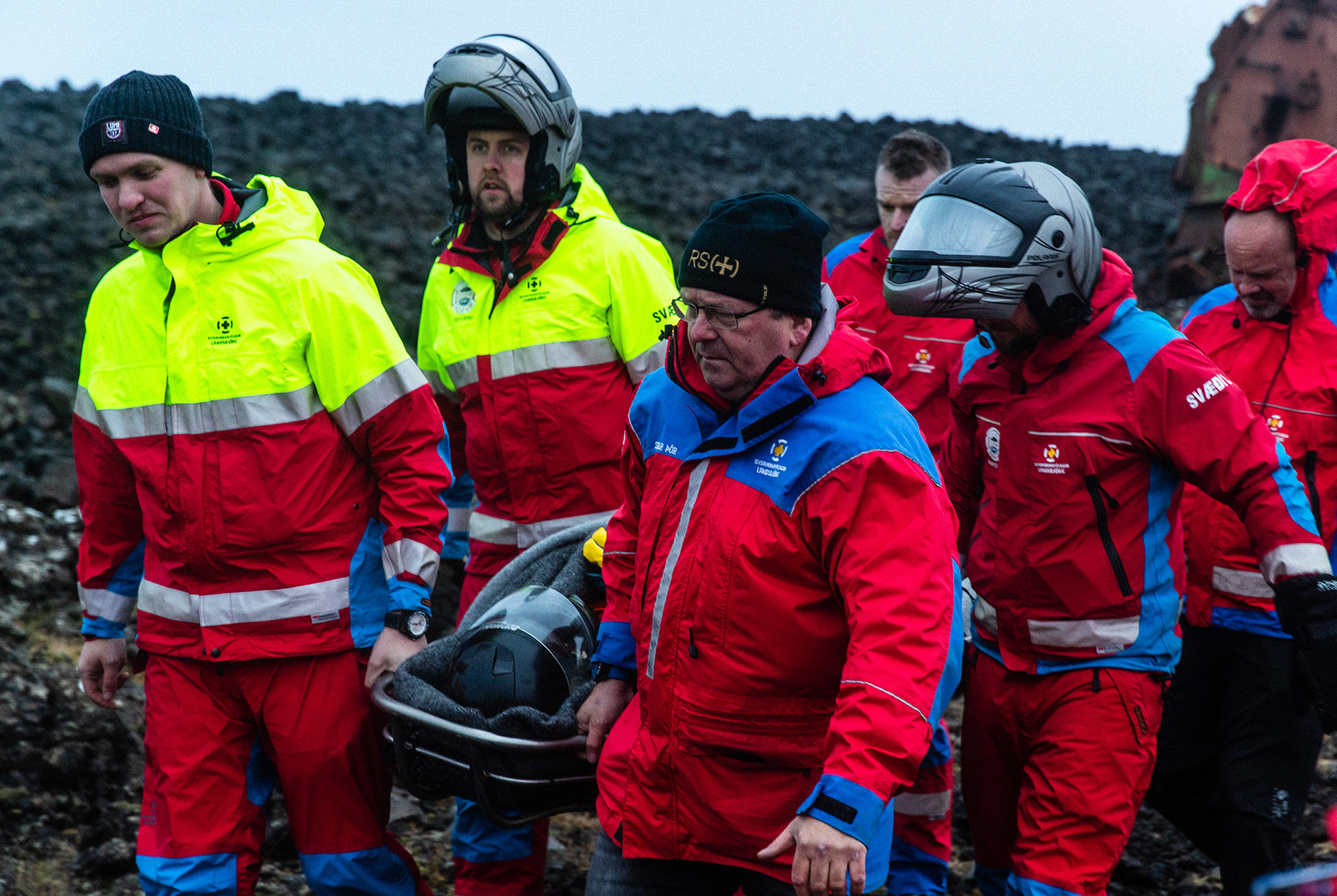
Much of the Icelandic landscape is volcanic and looks not dissimilar to the surface of the moon. Carrying a wounded person on a stretcher, therefore, is an act of coordination that is much more difficult than it appears. Here, ICE-SAR volunteers run stretcher drills with a “wounded” comrade.
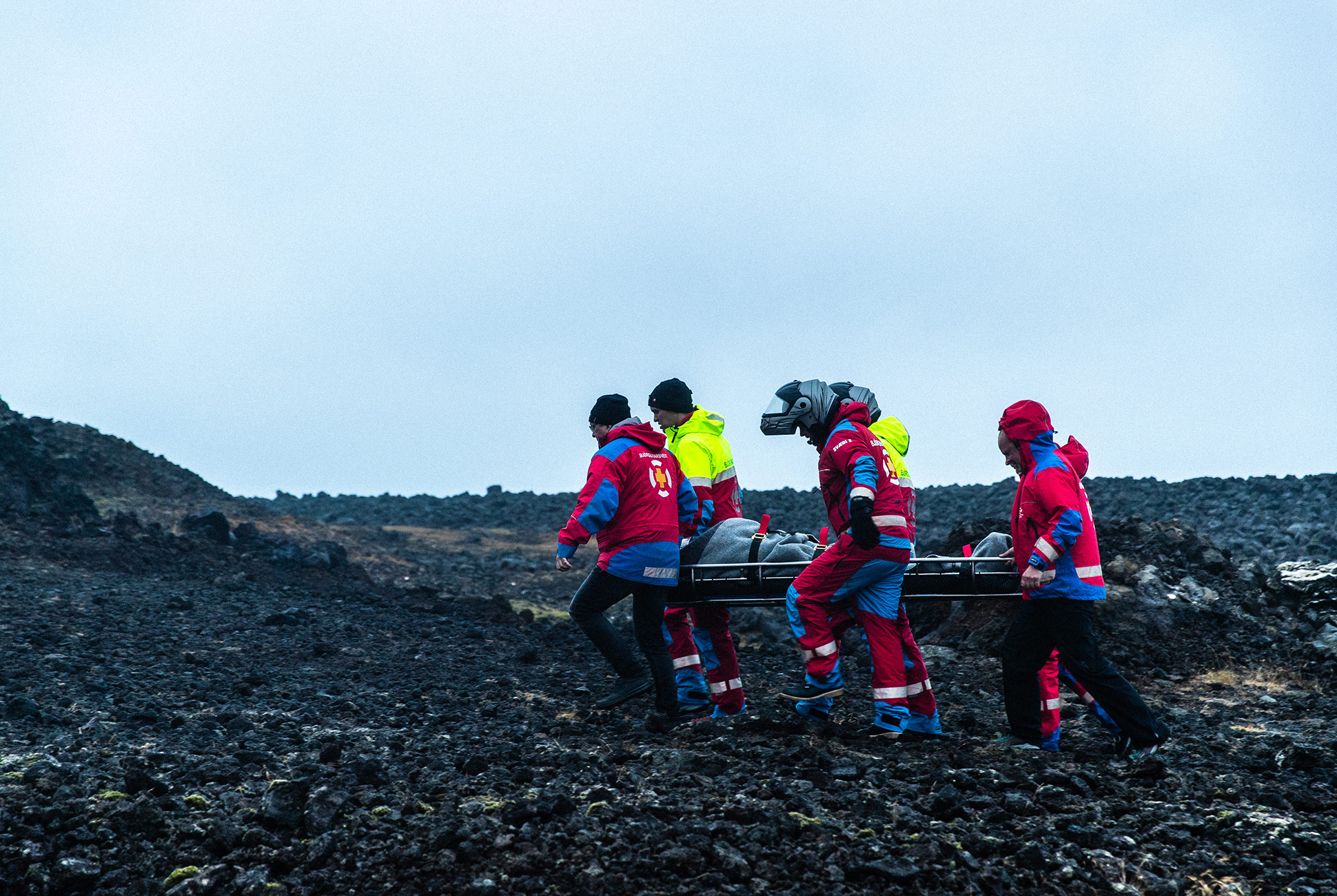
A stretcher drill is just one of countless rescue operations that must be constantly practiced until their execution is second-nature. This is ultimately the only way to become proficient in something that must be done under extreme pressure and in adverse conditions.
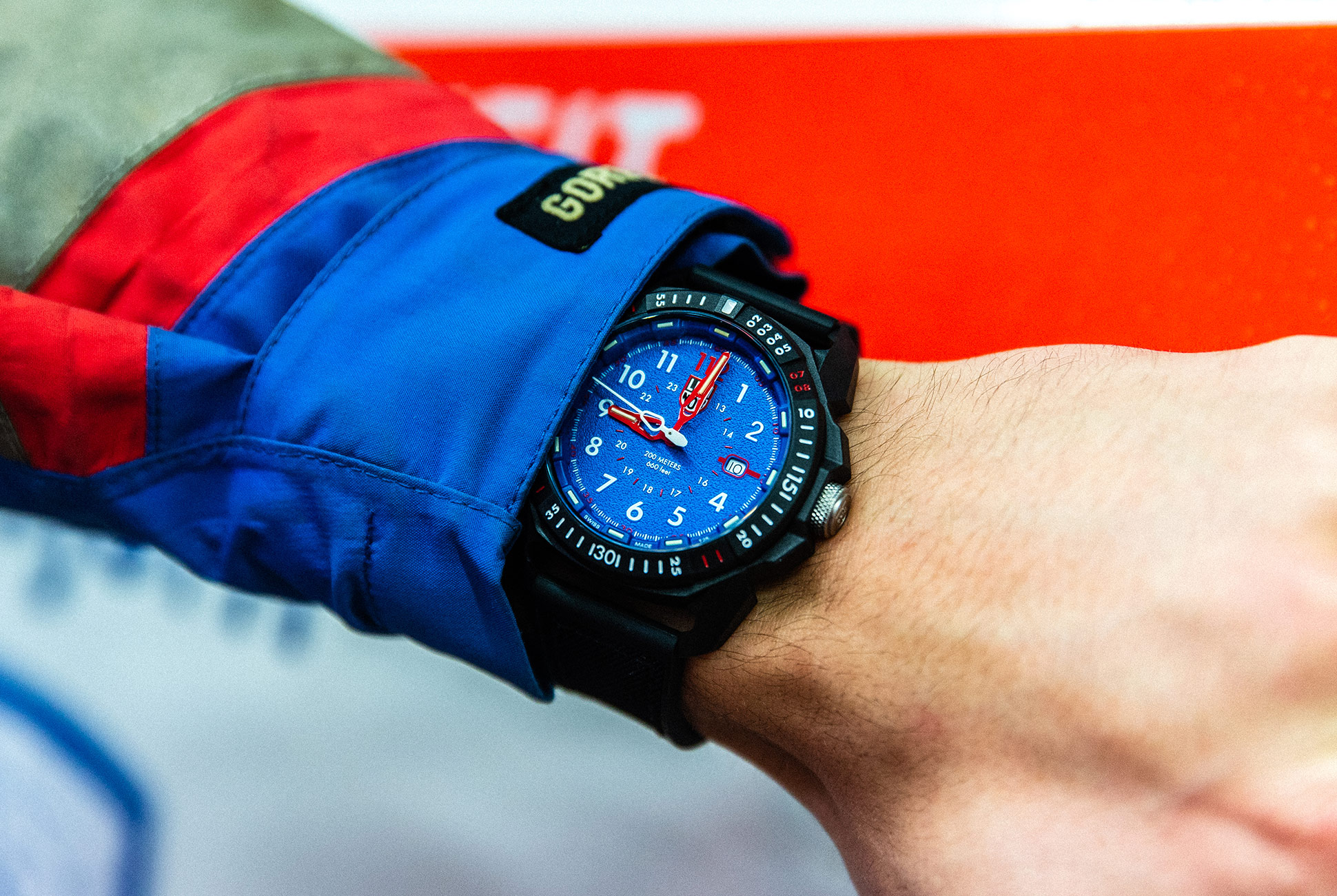
“Every second counts” is a mantra that rings true every day for ICE-SAR personnel, when the smallest amount of time can mean the difference between life and death. Luminox has provided a valuable partner is helping to measure that time in one of the harshest environments in the world.
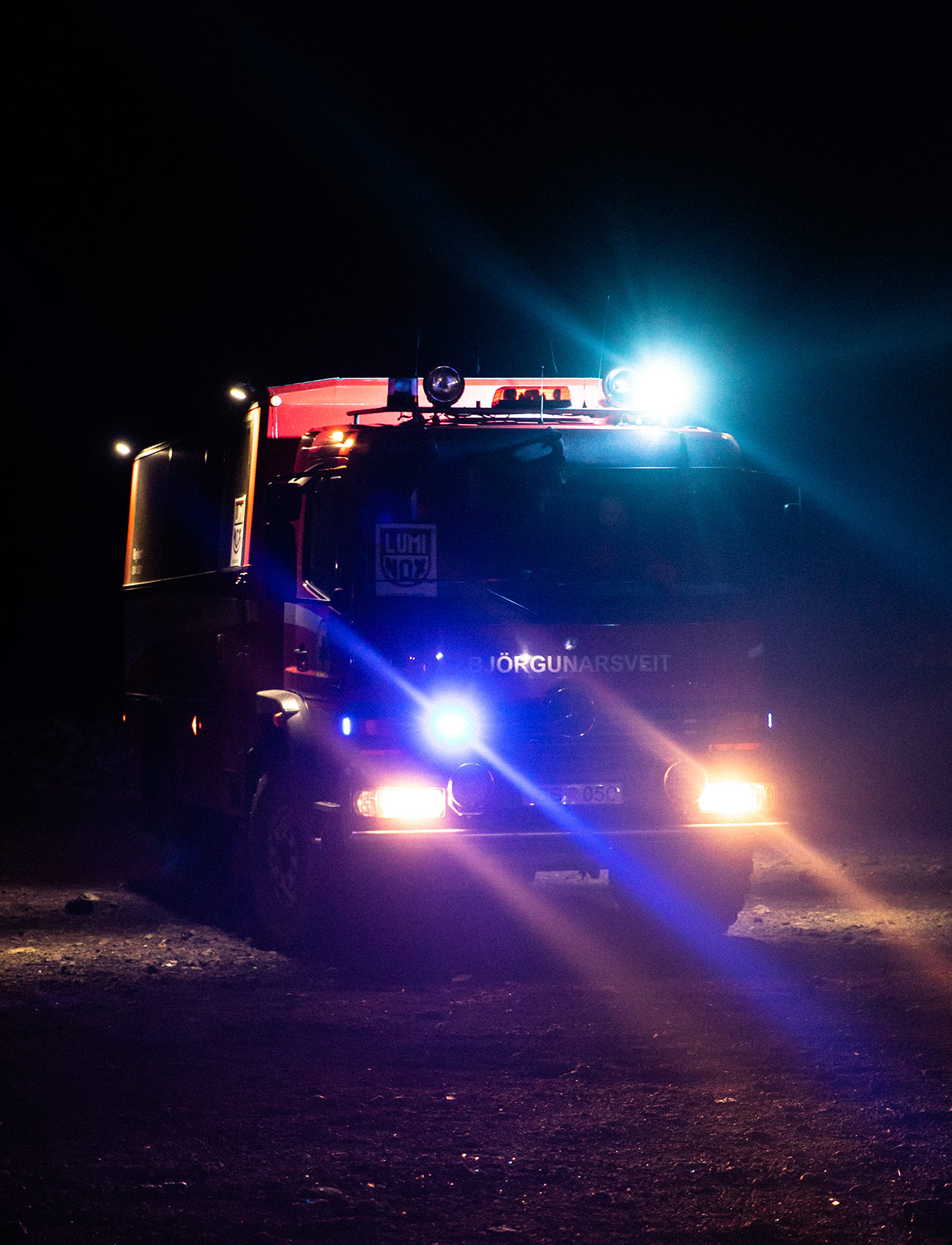
To navigate the Icelandic landscape, specialized vehicles are required, such as this Mercedes. Other vehicles include the venerable Toyota Hilux and different Ford trucks as well as vans, snowmobiles and more.
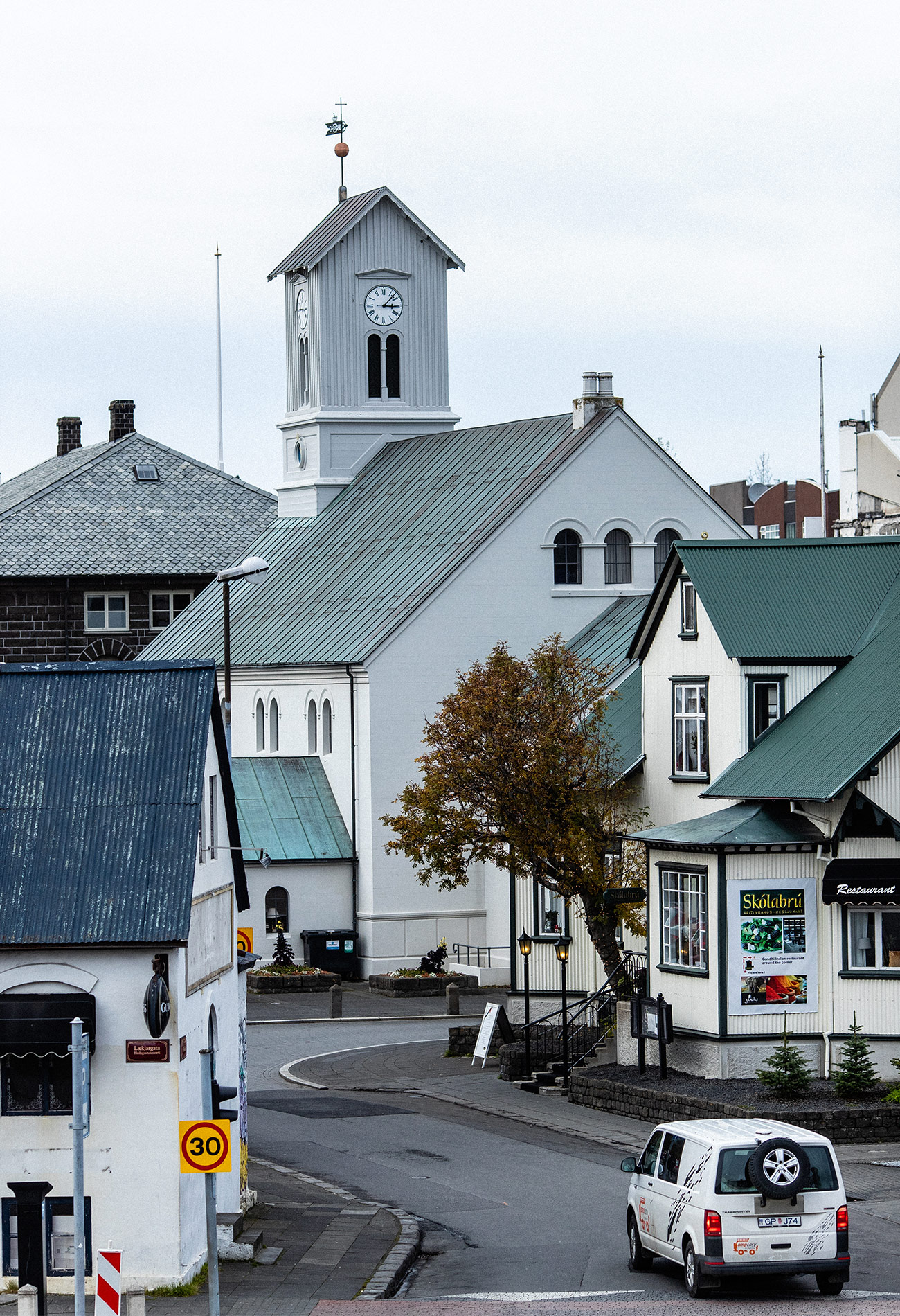
Reykjavík is not only Iceland’s capital and largest city, but also the northernmost capital of any sovereign state. Originally discovered in the 9th century, it is home to facilities and headquarters for many ICE-SAR teams, as well as many beautiful historical buildings and sites.
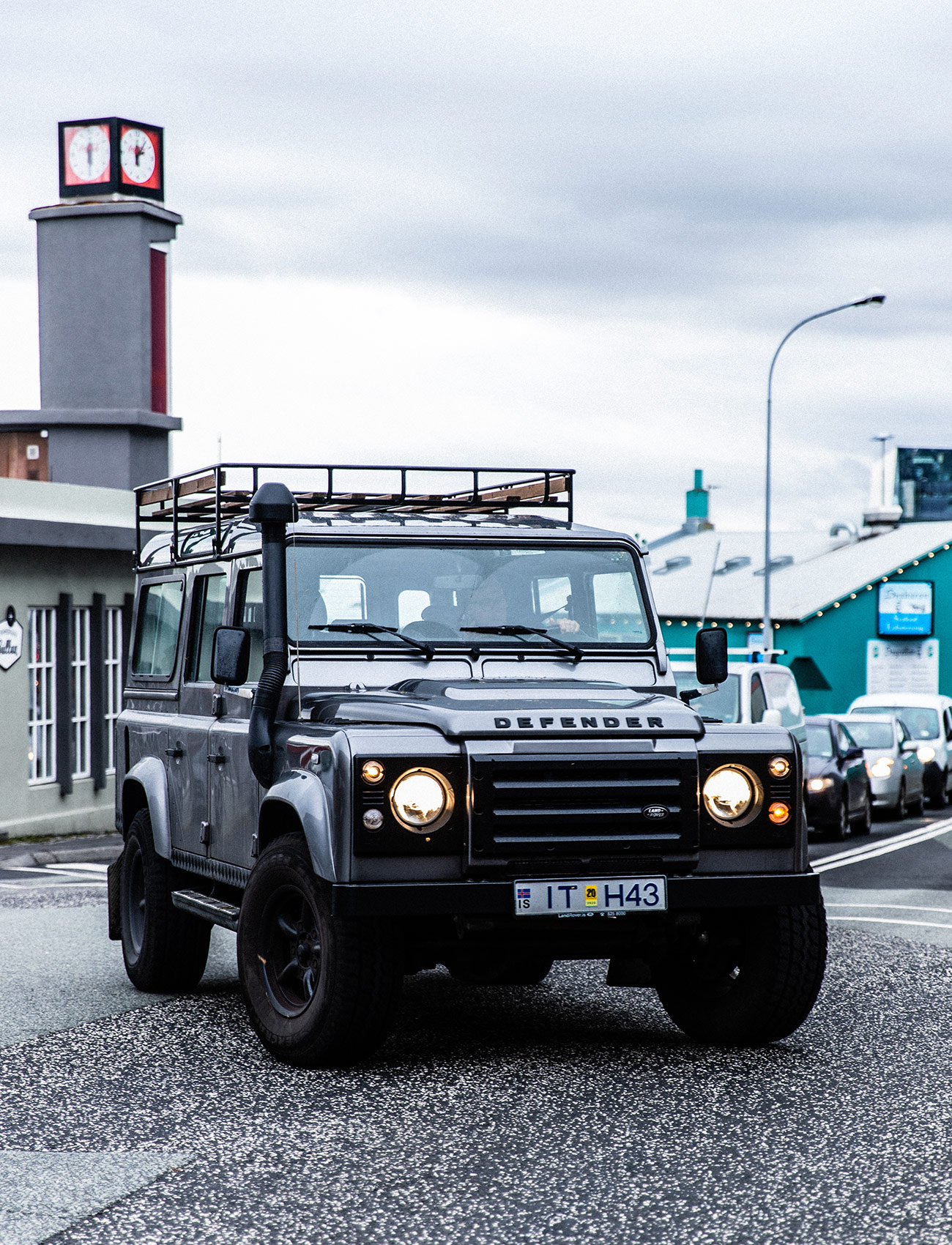
Various models of Land Rover are a common site around Iceland, and especially so the Defender in its different iterations. Navigating the Icelandic landscape outside the cities can be difficult without a serious off-road vehicle.
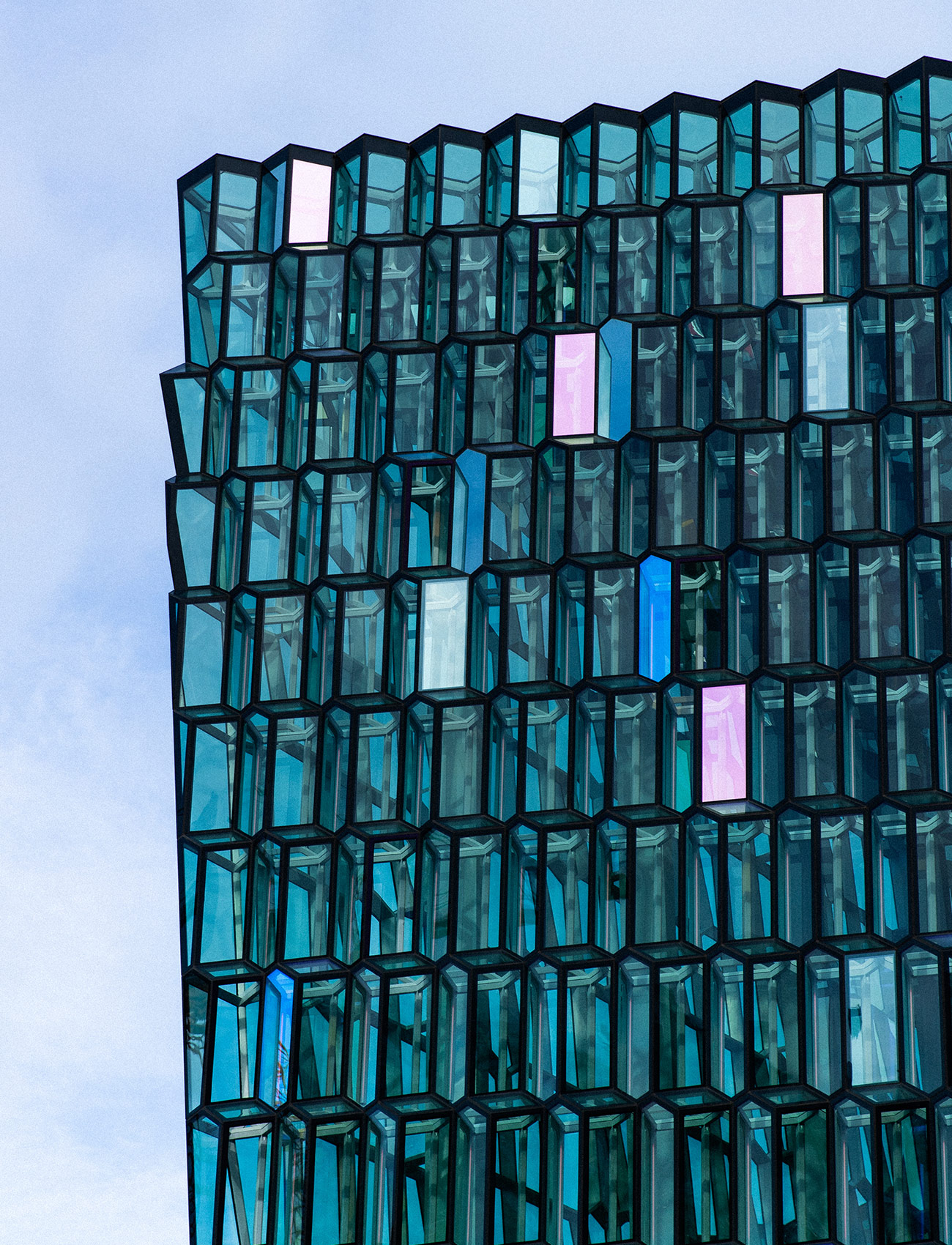
Though the downtown Reykjavík convention center may have seen its proposed scope decreased following the 2008 economic downturn, the building is still a striking landmark that sits astride the bay. It is utilized annually for an international conference on search-and-rescue topics called RESCUE, in which ICE-SAR features prominently.
,
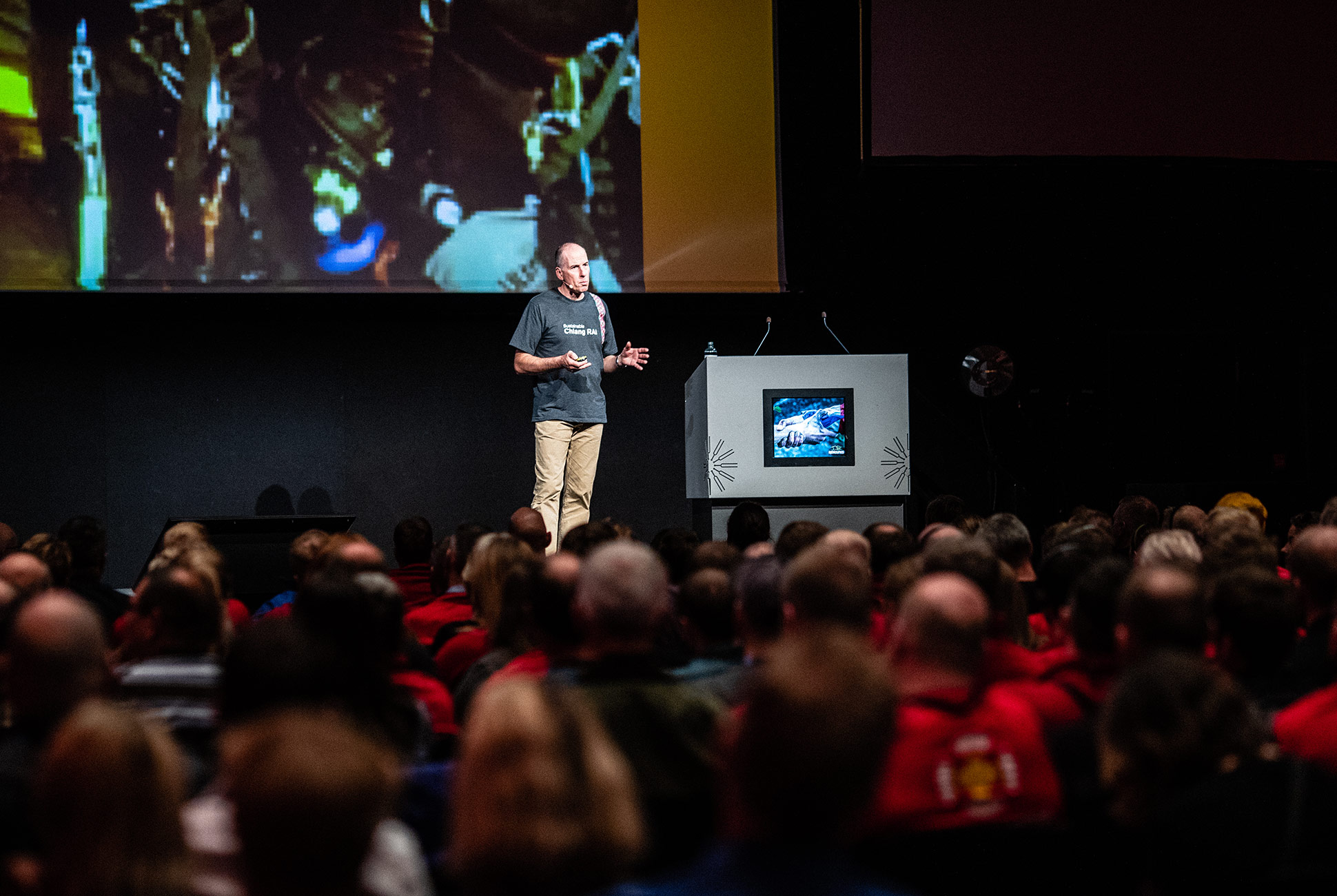
Richard Stanton, MBE, speaks at RESCUE 2018 about his role in the Tham Luang cave rescue in Chian Rai Provence, Thailand, in summer 2018. Stanton was one of several speakers who shared his deep knowledge of specialized rescue techniques with the international attendees.
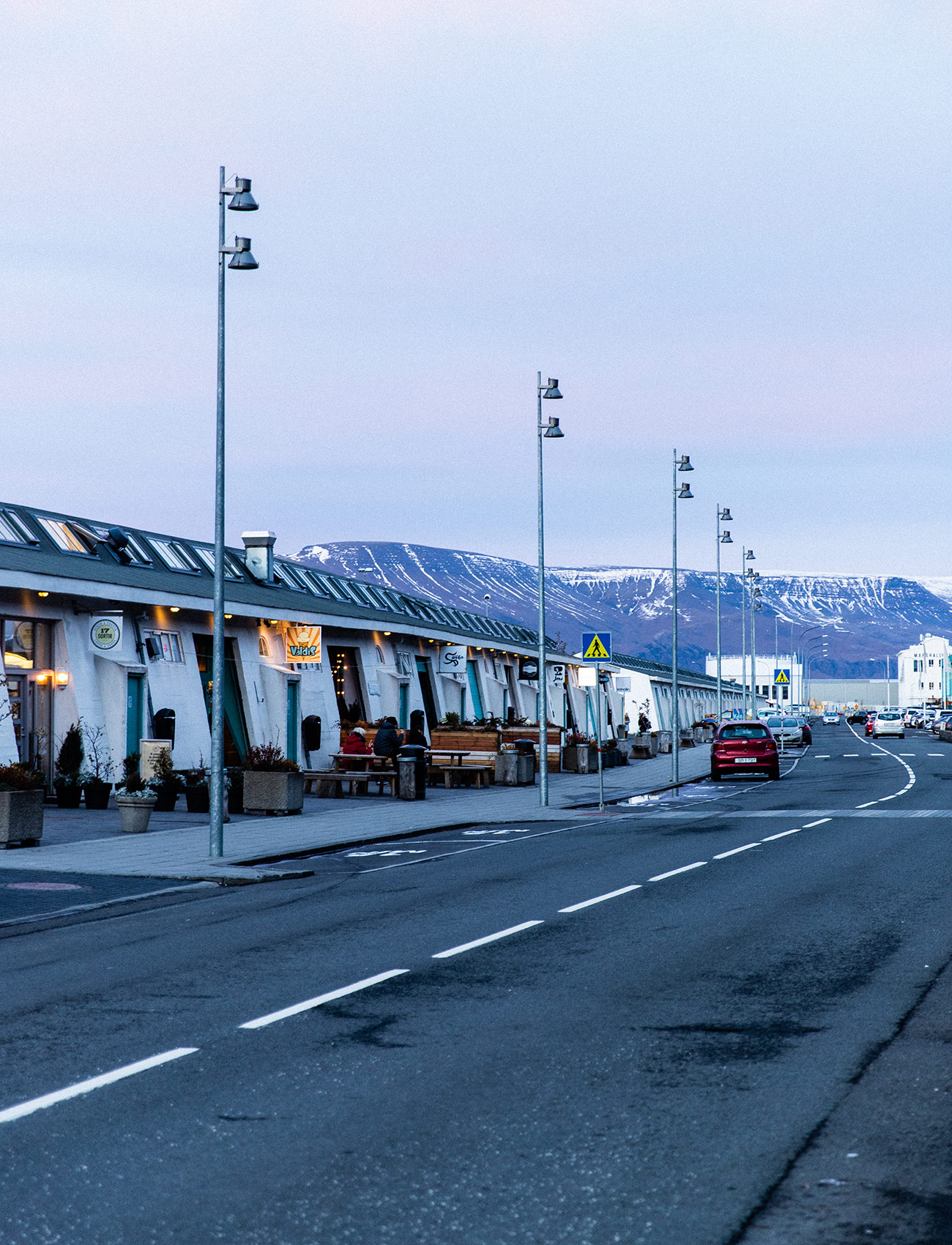
Ultimately Iceland, though remote, is a beautiful place to live, and maintaining their way of life in such a striking place is part of what motivates ordinary men and women to volunteer for such a dangerous profession as duty in ICE-SAR.
